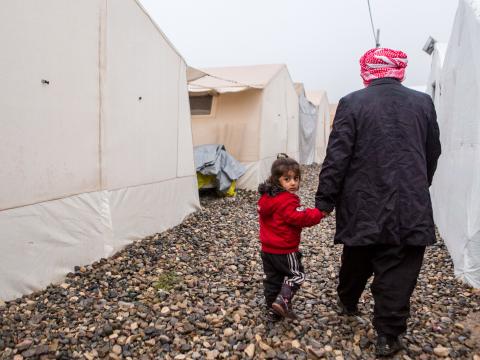Outrage and Optimism: Education in emergencies is ready for a revolution

Millions of students around the world are being denied education. This should evoke outrage. However, there is also reason for optimism. Using innovative approaches, which increasingly requires adapting to evolving technology, we can expand access to education for students in emergency and crisis situations. These new approaches not only create new opportunities for learning, but also facilitate safer environments for all involved.
As we draw near to the World Humanitarian Summit in Istanbul this month, naturally we consider the possibilities that could follow. Of course, there will be requests for access to quality education. But that begs the question:what does access look like in today's world? Is it a traditional school setting – playgrounds with swings and classrooms with books? Are those settings optimal in the context of at-risk environments? Between 2009 and 2013, there were almost 10,000 attacks on schools and education in more than 70 countries (BBC).
After many natural disasters and when conflict situations subside, school-aged children can return to school and continue their education. However, because crises have become increasingly protracted, it takes even longer for internally displaced people (IDPs) and refugees to return to a semblance of normal life. Displacement now stretches 17 years on average, exceeding the combined duration of primary and secondary education.
The conflicts and disasters facing the world today are true barriers to education. Even those children who are able to access education face difficult odds with overcrowded classrooms, language barriers to curriculum in host countries, and often inexperienced, under-qualified, and stressed teachers brought on to meet the increased demand. In these contexts, innovative approaches are essential to ensure children and youth continue learning, even when confronted with emergencies.
As humanitarians, we need to ensure the access we intend to provide is relevant to evolving needs, especially within contexts where it is no longer safe for children to reach school. As with other interventions, if we innovate well in one context, it increases the likelihood that such innovations can be adapted and adopted in response to other disasters and conflicts.
Countries that host refugees have a moral and legal obligation to grant access to education (Convention on the rights of the Child, Section 22).The lack of access we see, may be due less to a lack of will than to an inability to meet growing need. Access has traditionally meant access to a physical learning space. In emergencies, this has often meant building new infrastructure or creating temporary learning spaces. We must ask the question: is this the only way to provide access to education?
The targeting of schools, the destruction of roads, and the risk of movement in conflict-affected areas can make accessing physical learning spaces dangerous. Thus, consideration of alternatives has become even more important.
How can we reduce the dangers that students face when accessing educational spaces or infrastructure? How can we provide learning from anywhere? What are the ICT technologies that will help transform education in emergencies?
As World Vision commits to prioritising Education in Emergencies as a life-saving intervention, these are some of the questions that World Vision will be debating as a panel member of what promises to be an engaging side event. Delivering Quality Education in Emergencies: What exactly needs to be done?
Read more
- Read about our Education in Emergencies programmes in Kurdistan Region of Iraq
- Learn how e-Learning is helping Syrian refugee children in Lebanon